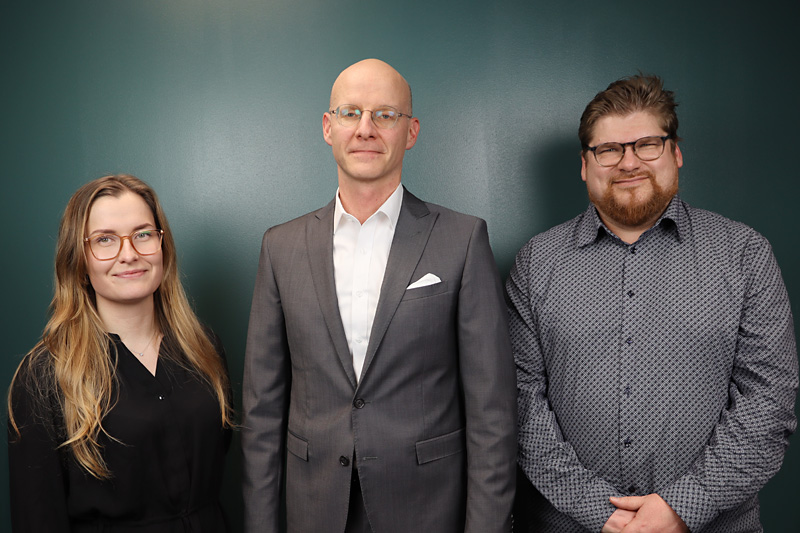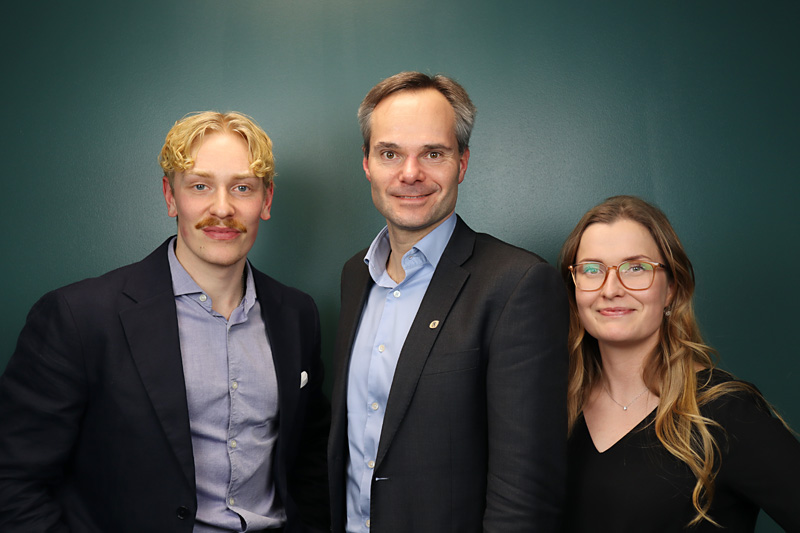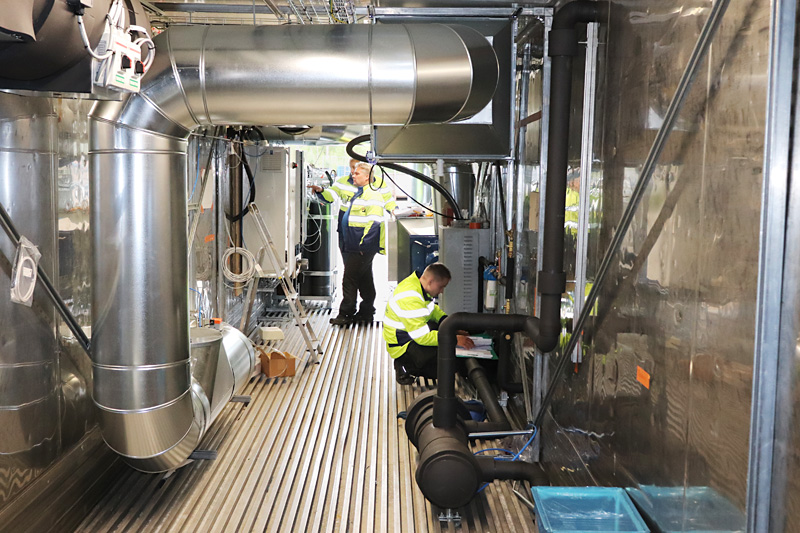Turning District Heating Carbon-Negative

In 2021, energy group Tampereen Energia became one of the first companies in Finland to set ambitious goals for carbon-negative energy production. Jukka Joronen, Director of Energy Markets at Tampereen Energia, discussed with Maiju Hirvikallio and Sami Nissinen, the Head of Operations for Energy Services at Fimpec, the strategies for achieving this goal in a recent episode of Fimpec’s “Kumppanit” podcast.
This summary highlights key points from the 8th episode of the “Kumppanit” podcast, focusing on the transition of district heating towards carbon negativity. The podcast, hosted by Maiju Hirvikallio, Fimpec’s Director of Communications & Marketing, is available for listening in Finnish on Spotify.
Tampereen Energia, an energy group employing nearly 400 people, has been making significant strides towards carbon neutrality since the early 2010s. By 2022, approximately 53% of the energy produced by the conglomerate was renewable, and this figure is expected to rise to around 75% in 2023. However, the ultimate goal is set for 2030 when all energy sold by Tampereen Energia will be carbon-neutral, and by 2040, it aims to achieve carbon negativity.
Jukka Joronen, Director of Energy Markets at Tampereen Energia, explains that the transition is based on a comprehensive study of moving towards non-combustible and carbon-negative district heating, progressing through three phases: low emissions, carbon neutrality, and finally, carbon negativity.
“We have largely achieved low emissions by minimizing the use of peat, natural gas, and oil. Investments in waste incineration and wood chip heating plants have quickly eliminated major emission sources. Additionally, we have started utilizing waste heat,” says Joronen.
Currently, the foundation of district heating is established using renewable fuels. The next step involves finding even more environmentally friendly alternatives, including the integration of electric boilers and heat storage.
“Electric boilers act as excellent peak load plants. When it’s windy, especially in freezing temperatures, these boilers help eliminate the need for fuels used in peak load production. Combining electric boilers with an industrial-scale district heating accumulator creates a biomass-wind power-based heating system, which is undoubtedly one of the most environmentally friendly concepts. In the future, the amount of electricity in district heating production will increase further, reducing the need for biomass and focusing primarily on replacing fossil fuels in heat production,” he assesses.
The final step towards achieving carbon negativity requires another innovative solution – the capture of biogenic carbon dioxide. When carbon dioxide is captured from a biomass-fired power plant and permanently stored or utilized, such as in green cement or synthetic fuel production, the city’s heating system becomes a substantial carbon capture system.
“We have dared to present this option boldly in our visions because scenarios for achieving climate goals require the capture of carbon dioxide from the atmosphere. If capture is necessary, the operating environment will eventually reach a level that allows investments, as the necessary technologies are already available. Finland’s conditions, thanks to the forest industry and district heating, make biogenic carbon dioxide capture sensible here,” predicts Joronen.
District Heating: an advantage in striving for carbon neutrality
Tampereen Energia’s path towards carbon negativity relies on leveraging the district heating system. Joronen emphasizes in the discussion that the prevalence of district heating in Finland is a significant advantage when aiming to reduce emissions. It provides an opportunity for carbon negativity, as well as economies of scale in heat and energy storage and maintenance. Above all, it offers the chance to utilize various heat sources.
“In the district heating system, we have a solid foundation to integrate new technology. When thermal energy is transferred through water, it’s much easier to switch fuels, for example, from natural gas to waste heat or biomass, compared to Europe where each house has a gas pipeline that is challenging to feed anything else into. This gives us the opportunity to make significant centralized changes and is therefore a quick route to climate-friendly heating,” he says.
Timing is key challenge
Tampere has made significant progress towards a carbon-free future, but challenges remain, with Joronen identifying the right timing and project complexity as crucial issues.
“One should not move too early or too late. Moving too early can lead to losses, but on the other hand, if you wait and wait, someone else will eventually make the investments. Another challenge, especially in projects related to the hydrogen economy, is their complexity. Their development requires a good team and good cooperation,” he notes.
Joronen doesn’t see technology as a major problem but emphasizes the need for the right mindset when making decisions about solutions.
“We have tried to plan our strategies so that we do not rely on overly speculative technologies but rather focus on those that already exist. However, there are risks associated with their scalability,” he explains.
Creating an environment where companies are willing to invest is still a significant challenge. In this regard, EU regulations play a crucial role. From the perspective of the energy company, Joronen’s wish list includes matters related to E-number calculations and the recognition of district heating.
“The EU aims to increase district heating, at least in discussions, but not all regulations support this. Environmental-positive actions in centralized heating solutions are not recognized. From a regulatory perspective, it’s better to disconnect from the district heating network and make changes to the building itself. I hope there is an understanding of the strength of the district heating system, especially in such a cold country, as it is the fastest way to achieve climate-friendly heating. Another question is the regulation of negative emissions, which is now being planned. It should be high-quality and project-enabling. Overall, clarity, long-term thinking, and predictability are needed in terms of regulation.”
Can green hydrogen production become a new CHP?
Sami Nissinen, the Head of Operations for Energy Services at Fimpec, raised the question in the discussion of whether an energy company’s business could expand into carbon negativity beyond heating and electricity. This brings up the possibilities offered by the hydrogen economy. Joronen sees a parallel in Finland to the previously prevalent combined heat and power (CHP) production.
“In hydrogen production, a lot of heat is generated. It may be that while electricity and heat were previously produced in CHP plants, in the future, more hydrogen production plants will be designed to produce hydrogen and heat very efficiently. Initial steps toward this development are visible,” he concludes.
“Kumppanit” podcast page (in Finnish)


